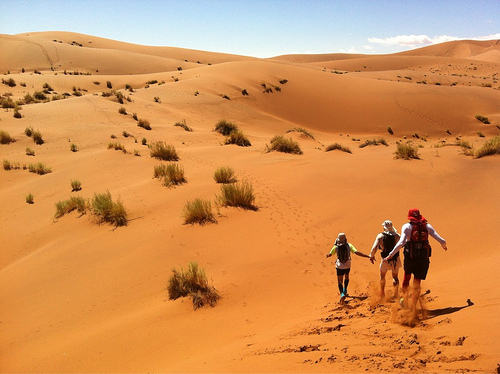The filming of the latest Mad Max action feature in the world’s oldest desert has caused a major outcry, with environmentalists accusing filmmakers of damaging Namibia’s sensitive ecosystem.
The Namibian government was delighted when the director George Miller chose to shoot his post-apocalyptic sequel, Mad Max: Fury Road, starring Charlize Theron, in its country, bringing in 370-million Namibian dollars (£27m) to the economy, employing about 900 local staff, and paying 150-million Namibian dollars in taxes.
The film, the fourth Mad Max feature, was shot in the Dorob national park, in the Namib desert, along southern Africa’s Atlantic coast. Scientists estimate the area to be between 50-million and 80-million years old.
A leaked environmental report claims film crew damaged sensitive areas meant to be protected, endangering reptiles and rare cacti.
The independent researcher appointed to write the report, the ecological scientist Joh Henschel, says public consultation prior to filming was insufficient.
“It all happened without an environmental impact assessment,” he said, “so it’s difficult to assess the extent of the impact without a baseline.”
Henschel said the decision to grant permission to film was made before the country’s newest enviromental legislation was promulgated. This, he says, would have prohibited it.
He said the film crews had driven over untouched areas of the desert, and then tried to erase their tracks by sweeping the area smooth.
“They are doing the best of what they can do under the circumstances, but they can’t undo the damage done, to the environment and their reputation,” he said.
Henschel said the film studio had hired a scientific team of its own to deal with the situation.
The government-run Namibia Film Commission is concerned the negative publicity will damage its lucrative film industry.
Florence Haifene, the commission’s executive secretary, said all the environmental requirements had been met. “We don’t want a bad image painted of our country, especially when the allegations are unverified and untrue,” she said.
In response to reports about the alleged damage, the commission placed a full-page advertisement in a state-owned newspaper denying the claims.
The coastal watchdog Nacoma (the Namibian Coast Conservation and Management Project) said the leaked report had been commissioned by the government in response to complaints during filming, but that it was just a draft that still needed to be finalised.
“[The leak] has been a bit of an embarrassment. It’s difficult and premature to make judgments,” said the co-ordinator Rob Brady. “It’s still being reviewed by other scientists.”
Brady said other films had been filmed in the same area before it was designated a national park. “But unfortunately,” he added, “this is a type of film that is quite destructive, racing vehicles and such over different sites.”
Nastasya Tay for the Guardian Africa Network.
